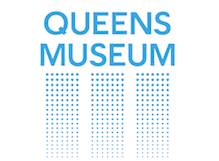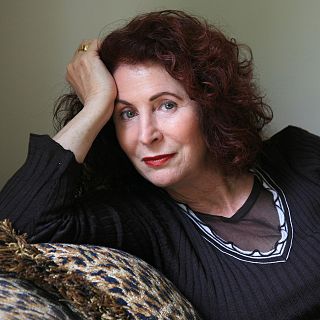
Petah Tikva, also known as Em HaMoshavot, is a city in the Central District of Israel, 10.6 km (6.6 mi) east of Tel Aviv. It was founded in 1878, mainly by Haredi Jews of the Old Yishuv, and became a permanent settlement in 1883 with the financial help of Baron Edmond de Rothschild.

The Brooklyn Museum is an art museum in the New York City borough of Brooklyn. At 560,000 square feet (52,000 m2), the museum is New York City's second largest and contains an art collection with around 500,000 objects. Located near the Prospect Heights, Crown Heights, Flatbush, and Park Slope neighborhoods of Brooklyn, the museum's Beaux-Arts building was designed by McKim, Mead & White.

Cooper Hewitt, Smithsonian Design Museum is a design museum at the Andrew Carnegie Mansion in Manhattan, New York City, along the Upper East Side's Museum Mile. It is one of 19 Smithsonian Institution museums and one of three Smithsonian facilities located in New York City, along with the National Museum of the American Indian's George Gustav Heye Center in Bowling Green and the Archives of American Art New York Research Center in the Flatiron District. Unlike other Smithsonian museums, Cooper Hewitt charges an admissions fee. It is the only museum in the United States devoted to historical and contemporary design. Its collections and exhibitions explore design aesthetic and creativity from throughout the United States' history.

The Queens Museum is an art museum and educational center at Flushing Meadows–Corona Park in Queens, New York City, United States. Established in 1972, the museum has among its permanent exhibitions the Panorama of the City of New York, a room-sized scale model of the five boroughs originally built for the 1964 New York World's Fair. Its collection includes a large archive of artifacts from both the 1939 and 1964 World's Fairs, a selection of which is on display. As of 2018, Queens Museum's director is Sally Tallant.

Tel Aviv Museum of Art is an art museum in Tel Aviv, Israel. The museum is dedicated to the preservation and display of modern and contemporary art from Israel and around the world.

The Studio Museum in Harlem is an art museum that celebrates artists of African descent. The museum is located at 144 West 125th Street between Adam Clayton Powell Jr. Boulevard and Lenox Avenue in the Harlem neighborhood of Manhattan, New York City, United States. Founded in 1968, the museum collects, preserves and interprets art created by African Americans, members of the African diaspora, and artists from the African continent. Its scope includes exhibitions, artists-in-residence programs, educational and public programming, and a permanent collection. The museum building was demolished and replaced in the 2020s; a new building on the site is to open in 2025.

The Canterbury Museum is a museum located in the central city of Christchurch, New Zealand, in the city's Cultural Precinct. The museum was established in 1867 with Julius von Haast – whose collection formed its core – as its first director. The building is registered as a "Historic Place – Category I" by Heritage New Zealand.

Gideon Gechtman was an Israeli artist and sculptor. His art is most noted for holding a dialogue with death, often in relation with his own biography.

The MIT Museum, founded in 1971, is part of the Massachusetts Institute of Technology in Cambridge, Massachusetts. It hosts collections of holography, technology-related artworks, artificial intelligence, architecture, robotics, maritime history, and the history of MIT. Its holography collection of 1800 pieces is the largest in the world, though only a few selections from it are usually exhibited. As of 2023, works by the kinetic artist Arthur Ganson were the largest long-running displays; in 2024 they were replaced by a newer art installation, but some of Ganson's works were reinstalled elsewhere in the museum. There is a regular program of temporary special exhibitions, often on the intersections of art and technology.

The HaMoshava Stadium, also known as Petah Tikva Stadium, is a football stadium in Petah Tikva, Israel. It was completed in 2011, and is used mainly for football matches and is home to both Hapoel Petah Tikva and Maccabi Petah Tikva.

Dor Guez Munayer is a Jerusalemite artist of Christian Palestinian and Tunisian Jewish origin, founder of The Christian Palestinian Archive, and the director of SeaPort Residency.
Haimi Fenichel is an Israeli sculptor and installation artist.

Shahar Marcus is an Israeli artist who works primarily in video, performance and installations.

The Oregon Jewish Museum and Center for Holocaust Education is the largest museum dedicated to the documented and visual history of the Jews of Oregon, United States. The Museum is dedicated to the preservation, research, and exhibition of art, archival materials, and artifacts of the Jews and Judaism in Oregon.

Alexander Bogen was a Polish-Israeli visual artist, a decorated leader of partisans during World War II, a key player in 20th century Yiddish culture, and one of the trailblazers for art education and Artists' associations in the emerging state of Israel.

Zvi Lachman is an Israeli sculptor and educator.
Mark Yashaev is an Israeli photographer.

Dalia Levin is an Israeli museum director and art curator. She was director and chief curator of Herzliya Museum of Contemporary Art in 1993-2014 and chief curator of Petah Tikva Museum of Art in 1988–1993.

Ruth Zarfati-Sternschuss was an Israeli painter, sculptor and illustrator. She was a member of the Ofakim Hadashim art movement.

Yehiel Krize was an Israeli painter, born in 1908 in Kalisz, Poland. He died in 1968.



















